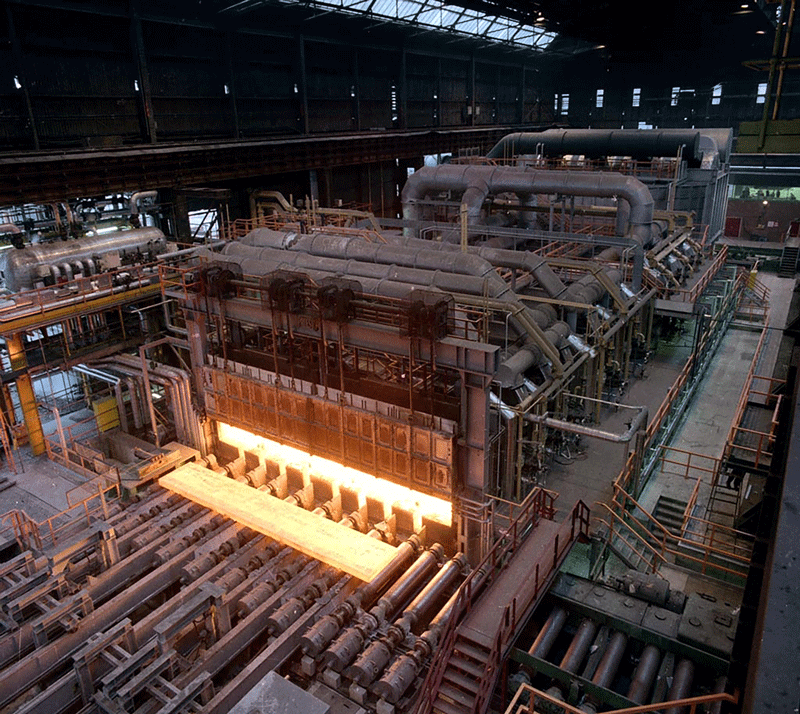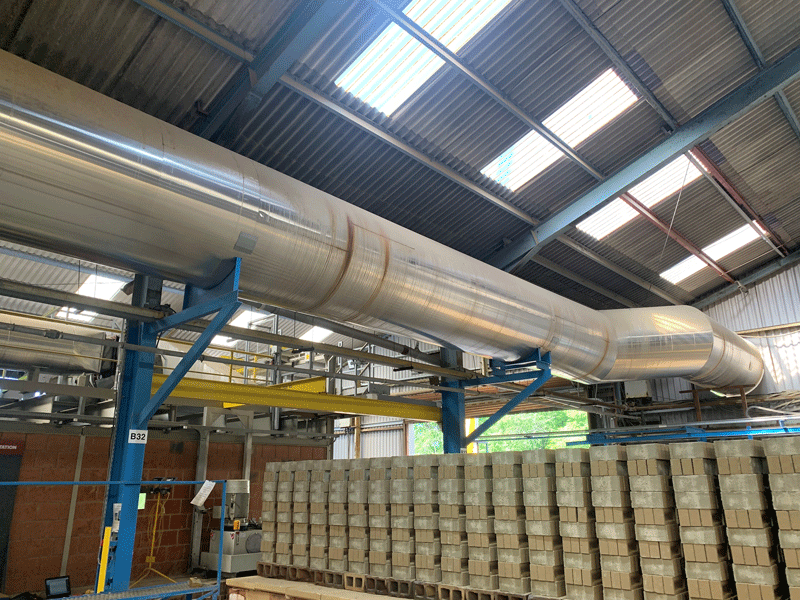UK steel and ceramics sectors join forces to cut carbon emissions
A consortium of companies representing the UK steel and ceramics sectors has investigated ways to increase waste heat recovery from continuous steel reheat furnaces and brick tunnel kilns to deliver energy savings and help reduce carbon emissions.

The project sees the Materials Processing Institute join forces with British Steel, Wienerberger UK, Heatcatcher Ltd and Low Carbon Europe Ltd.
Both the steel and ceramics sectors use continuous gas-fired furnaces at temperatures in excess of 1,000°C, although the processes do differ. The two energy-intensive industries have compared their respective high-temperature processes and identified areas of best practice. To do this, the consortium has compared a British Steel reheating furnace with brick tunnel kilns operated by Wienerberger UK.
Oliver Milling, Principal Researcher at the Materials Processing Institute, explains that the steel furnace delivers a hot product at 1,200-1,300°C for further processing, while, for brick, the furnace heats products to around 1,100°C and then cools them down so the bricks are removed as close to ambient temperature as possible.
Milling adds that there are also physical differences both in the furnace shape and the deployment of burners. In the brick industry, furnaces usually employ a large number of smaller burners distributed across it, while the steel furnace uses fewer but larger capacity burners, which normally heat from the sides. These differences in operation and performance were important to the investigation.
The project partners started by reviewing the energy flows into and out of both processes using a combination of measurements. This gave a clearer understanding of where energy, particularly heat, enters and leaves, where it is recycled, and where it is used in further processes. Sankey diagrams were created to visualise the energy flows.
Simultaneously, they reviewed the burner technologies in both processes to calculate the combustion efficiency and the efficiency of delivering energy from the fuel used.
In doing so, they have identified ways to reduce the amount of gas used in the process, including introducing clean-burning hydrogen to the fuel mix by making changes to the furnace burner.
‘Gas consumption in furnaces can be reduced by improving burner efficiency using modern burners, recuperating heat into combustion air and reducing losses due to excess air in the furnace,’ explains Milling. ‘The exact solution is dependent on what burner technologies are in place, the atmosphere that must be maintained in a furnace for optimum product quality, and whether waste heat is available for recuperation.’

The project partners have identified how the remnant waste heat could be further deployed after the bulk energy reuse.
Milling proposes that the medium grade heat that remains in the steel furnace flue and cooling systems could generate electricity for use onsite, using an organic rankine cycle turbine that first transforms thermal energy into mechanical energy and then into electrical energy.
For the kilns at Wienerberger, the project partners have found that the lower grade heat from the furnace cooling systems might be best used to pre-heat combustion air, as this will result in fuel savings if the combustion in air temperature can be raised a few tens of degrees.
‘The major hurdles to implementing any of the energy reduction strategies identified [in the project] are investment costs and the potential cost of process disturbance,’ Milling adds. ‘Capital investment in these technologies often gives insufficient return for them to have been deemed worthwhile in the past. However, the technology is improving and payback periods are shortening.’
He says that if a process is stopped to install new technologies, then the resulting loss of business could make the change untenable. Any disruption must therefore be factored in.
The results from the project, which was partly funded by Innovate UK, are being shared more widely across the two sectors, which includes more than 40 other brick kilns and 20 steel reheat furnaces. The level of maturity and the efficiency of technologies used in other furnaces varies, but Milling says most operators are considering the most cost-effective options to install when a furnace requires a major refurbishment.
He concludes, ‘Most furnace operators will benefit from reviews of heat flows in their furnaces and comparing their operation to current best technologies and practice.
‘There is also scope for developing the use of measurement and control technologies in partnership without direct business competition.’







